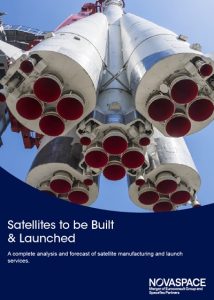According to its latest ‘Satellites to be Built & Launched‘, satellite demand is expected to reach an annual average of 3,700 units between 2024 and 2033, with growth primarily fueled by NGSO (non-geostationary orbit) constellations.
It is equivalent to 10 satellites per day and totaling a mass of 7 tons, says Novaspace, reflecting the growth of satellite-driven connectivity and data services.
The report estimates that commercial operators will account for 80% of this satellite volume, albeit with government customers representing two-thirds of its total value. Novaspace also expects that demand for GEO communication satellites will settle due to consolidation of satcom operators.
Mega-constellation
 Breaking that down, the company finds a growing concentration of satellite demand among a handful of mega-constellation operators. It writes:
Breaking that down, the company finds a growing concentration of satellite demand among a handful of mega-constellation operators. It writes:
“Respectively, four commercial broadband non-geostationary orbit (NGSO) mega constellations are transforming the landscape of satellite manufacturing and deployment, particularly in the pursuit of global connectivity. Starlink, Kuiper, G60, and GuoWang constellations alone will account for 65% of the demand in number of satellites but only 14% to the overall manufacturing and launch value as their vertical integration will enable massive economies at scale.”
Suppliers
It is the 27th such edition of the report, and this one includes new supplier profiles. These are for MDA, Swissto12, Nanoavionics, MDA, UTIAS, York Space Systems, Blue Origin, Firefly, and ULA. It also features a technical focus on six emerging satellite technologies. Specifically, 5G and 6G in space, edge computing in space, next-generation satellites, quantum computing in space, multi-orbit and multi-band hybrid space solutions.
It includes a database of all satellites that were launched in the last decade, as well as satellites currently under construction.
You can download the paid-for report online.
Novaspace is the result of a recent merger between Euroconsult and SpaceTec Partners.

